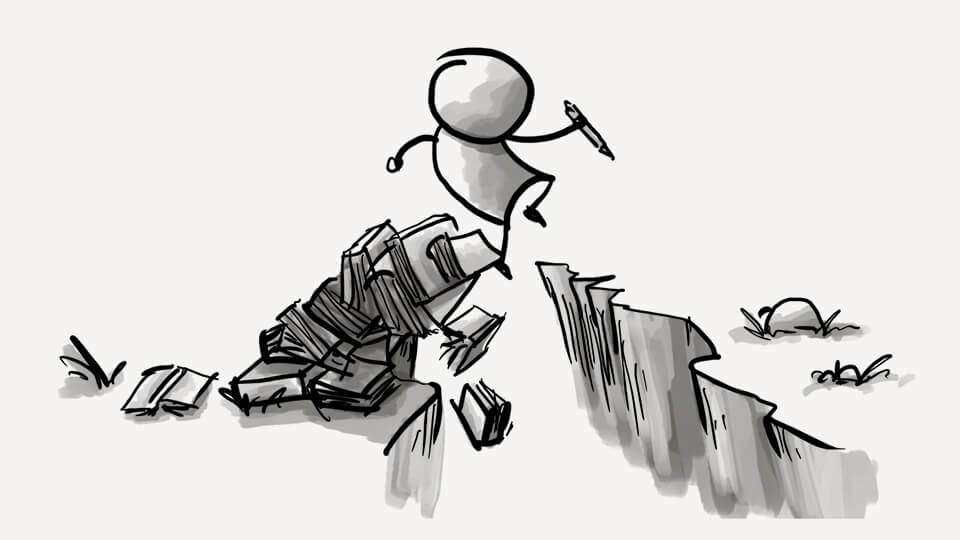Have you ever wondered how your favorite nonfiction authors get their points across so perfectly? Or how bloggers can present solutions to your problem in such a well-structured and organized fashion? Doesn’t it make you wish you could express your thoughts with similar pinpoint precision?
You can. I’ll show you a trick. It’s one of the oldest ones in the book.
First of all, you need to understand how nonfiction gets written. The vast majority of nonfiction writers (scientists, experts in their field, bloggers too) write not because they want to write down a point that already exists, formed perfectly, in their mind, but because they’ve found a point so interesting that they want to explore it further, and writing about it happens to be one of the best ways to go about it.
Having to write something down in a structured, systematic fashion presents you with a challenge. You’re a human being, and, similarly to all other human beings on the planet, you experience reality through lots of noise and distraction. Even the smartest of your thoughts drown in the sea of every day worries.
That’s why, for most, the process of writing a good piece of nonfiction is a process of discovery; plucking insights from a chaotic stream of consciousness, and arranging them into a whole that you can present to others.
It can be strange to think that authors of the smartest books you’ve read in your life had little idea about where they were leading you, because writing was a process of discovery as much for them as reading it later was to you, but that’s pretty much how it works in the nonfiction industry, or even in scientific writing.
The question becomes: how do they make it appear so coherent? The answer is twofold.
First, if you pay attention, you’ll notice that authors write their books, articles, and papers as if they were presenting some objective truth. They use a concept called the classic style of writing. It assumes an understanding on the part of the writer but also the reader, that there is no such thing as objective truth, and that all a piece of writing aims to achieve is to present a particular perspective as if it were objective because that makes it easier to read and take in. The classic style leaves it to the reader to form their own conclusions.
Second—and here’s this oldest trick in the book I promised you in the beginning—when an author is done with a piece of nonfiction, they will revise the text to bring it in line with the final point being made, and they write a new opening, sometimes taking the last chapter they wrote and using it as introduction.
I’m serious. And this trick, sometimes taught in schools as a part of essay writing, is nothing to sneer at. No one has their thoughts arranged in perfect order. You take what you have, examine it, rearrange it, and then go and paint a target around where the arrow has struck. It may feel like cheating, but it’s exactly what you need to do to help your readers understand the point you were trying to make.
Thanks for reading! If you enjoyed this article, please share it with someone who may enjoy it too.

